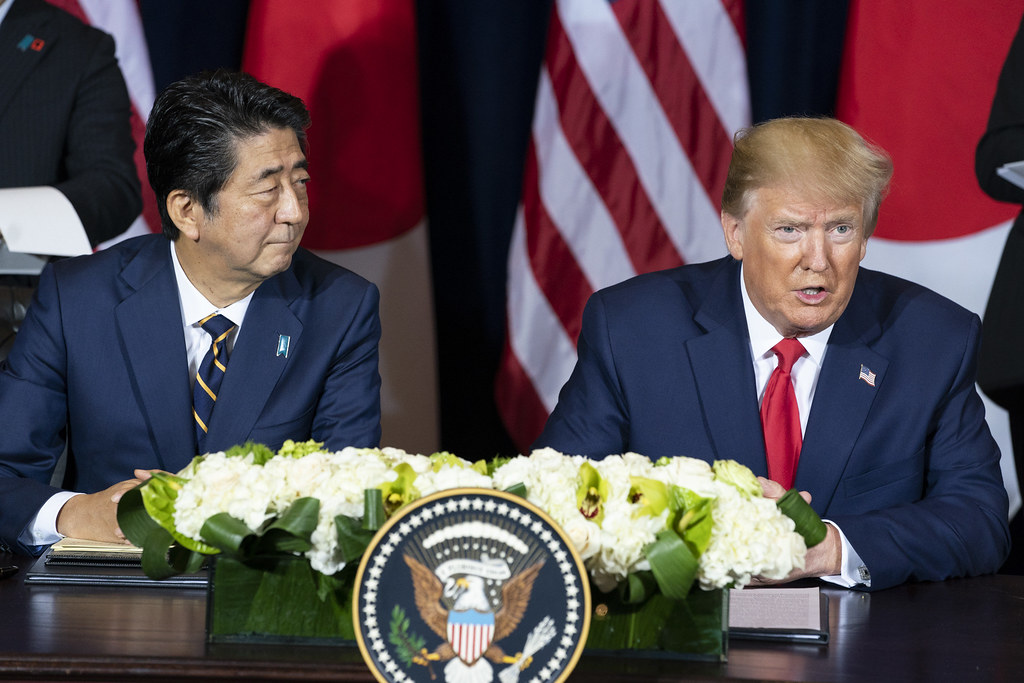
President Donald Trump unveiled a trade framework with Japan on Tuesday, introducing a 15% tax on goods imported from the country.
“This Deal will create Hundreds of Thousands of Jobs — There has never been anything like it,” Trump wrote on Truth Social, while emphasizing that the U.S. “will continue to always have a great relationship with the Country of Japan.”
Trump added that, under his direction, Japan would invest $550 billion into the U.S. economy and open its market to American autos and rice. The 15% tariff rate marks a reduction from the 25% tariff Trump had threatened in a recent letter to Japanese Prime Minister Shigeru Ishiba, which was set to take effect on August 1.
Japanese Prime Minister Ishiba acknowledged the agreement early Wednesday, noting that it would be mutually beneficial and foster cooperation.
Context and Market Reaction
With this announcement, Trump is aiming to highlight his dealmaking skills amid a backdrop of market turbulence caused by his tariff policies earlier this year. Though the initial announcement of tariffs in April triggered fears of slowed economic growth, those worries have somewhat eased.
However, key details remain unclear, such as whether Japanese-built autos will face the 25% tariff Trump imposed on that sector.
The tariffs align with Trump’s broader narrative of protecting American industry. His administration asserts that the tariffs will generate revenue to reduce the federal deficit and encourage companies to relocate manufacturing back to the U.S., thereby reducing trade imbalances.
The ongoing wave of tariffs continues to raise concerns about higher costs for consumers and businesses, as companies may pass these costs along. General Motors recently reported a 35% drop in net income for the second quarter, attributing some challenges to tariffs, which also caused its stock price to fall sharply.
Additional Trade Moves in Asia and Europe
As the August 1 deadline nears, Trump also announced a trade framework with the Philippines, setting a 19% tariff on imports from that country while exempting American products. Tariffs on Indonesia remain at 19%.
The U.S. ran significant trade deficits last year: $69.4 billion with Japan, $17.9 billion with Indonesia, and $4.9 billion with the Philippines. These imbalances reflect America importing more from these countries than it exports to them.
Trump also hinted at upcoming trade talks with the European Union, following a letter threatening a 30% tariff on EU goods starting August 1.
Meanwhile, negotiations with China continue, with tariffs of 30% on certain goods and talks scheduled through August 12. Treasury Secretary Scott Bessent will meet Chinese officials in Stockholm, aiming to rebalance trade by boosting U.S. manufacturing and encouraging Chinese consumer spending.
“President Trump is remaking the U.S. into a manufacturing economy,” Bessent said. “If we could do that together, we do more manufacturing, they do more consumption. That would be a home run for the global economy.”
Author’s Opinion
Trump’s trade framework with Japan and others is a bold attempt to recalibrate America’s economic relationships through tariffs and investment commitments. While aiming to revive U.S. manufacturing and reduce deficits is commendable, the risk remains that tariffs could stifle growth, increase prices, and disrupt supply chains. The success of this strategy hinges on whether foreign partners genuinely open their markets and whether American businesses can absorb these new costs without passing them on to consumers.
Featured image credit: Trump White House Archived via Flickr
For more stories like it, click the +Follow button at the top of this page to follow us.
